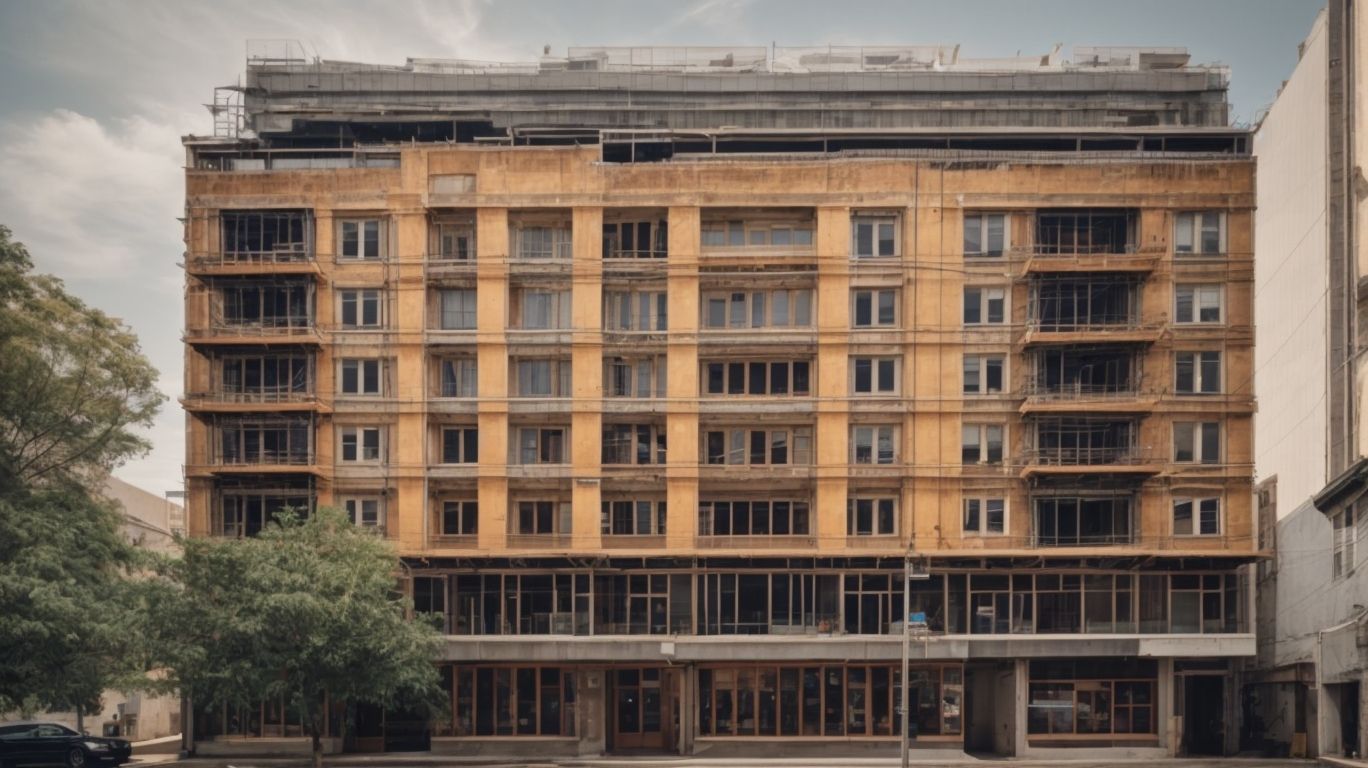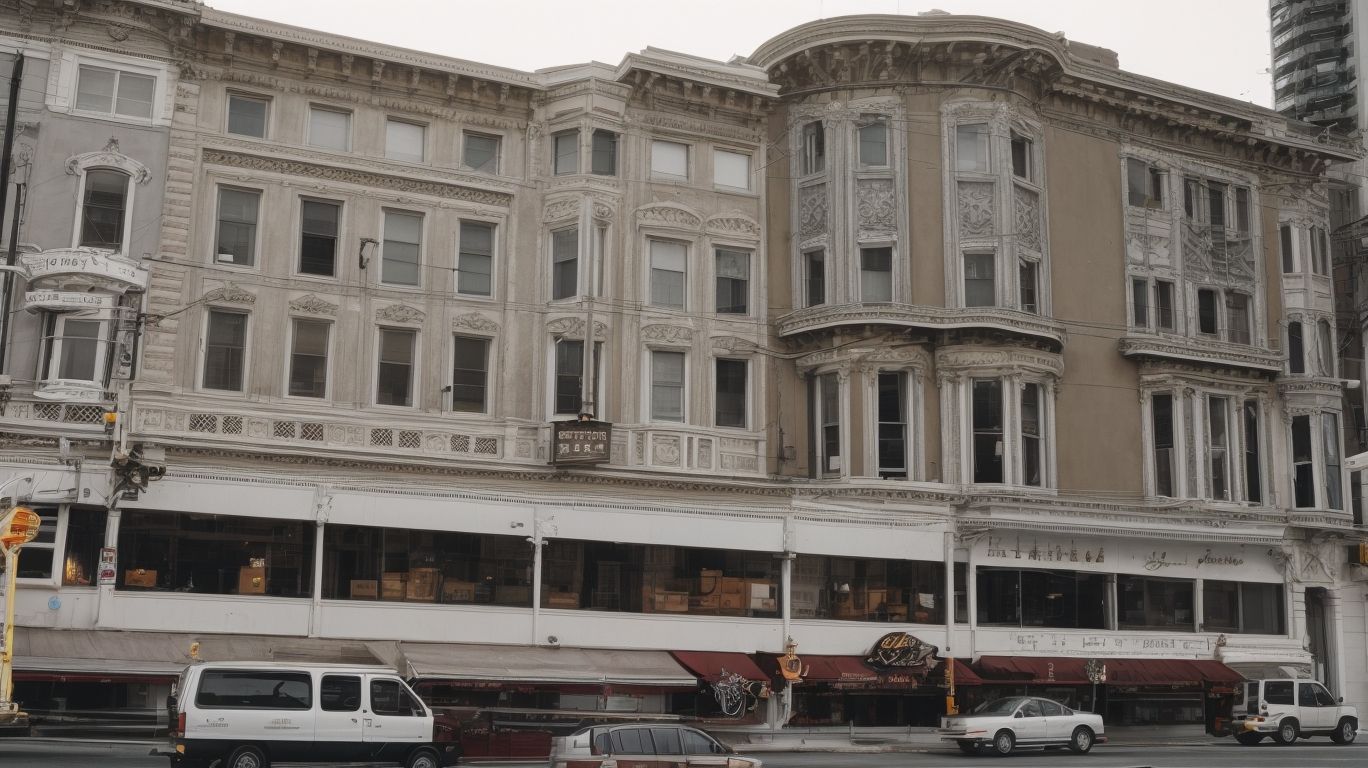
Common Questions About Soft-Story Retrofit Services
Soft-story buildings are vulnerable to earthquakes due to their design, making them potentially dangerous in seismic zones. In this article, we will explore what soft-story buildings are, why they are vulnerable to earthquakes, and the benefits of soft-story retrofitting.
We will also discuss when retrofitting is required, the cost and time involved, and the steps of the retrofitting process. We will provide tips on finding a reliable service provider and the requirements for retrofitting in your area. Don’t miss out on crucial information about the safety of soft-story buildings!
What Is a Soft-Story Building?
A soft-story building is a multi-story structure characterized by a weaker or less rigid first floor, typically due to large openings for parking or commercial space, making it susceptible to seismic hazards and structural damage.
Architectural features such as open floor plans and fewer walls or columns on the first floor can compromise a building’s stability during earthquakes. Soft-story buildings, popular for parking or retail purposes, are particularly vulnerable to seismic hazards due to their design. These structures are common in urban areas and were popular in the past, but now owners and authorities must prioritize maintenance and retrofitting to improve their resilience and prevent potential structural damage.
Why Are Soft-Story Buildings Vulnerable to Earthquakes?
Soft-story buildings are particularly vulnerable to earthquakes due to their structural vulnerabilities, which are often exacerbated by the lack of adequate reinforcements and modifications to strengthen the building’s integrity.
Soft-story buildings often have open floor plans on lower levels, making them vulnerable to lateral forces in earthquakes. Building owners and property management are responsible for identifying these weaknesses and taking action to strengthen the structure. This can include adding bracing, shear walls, or retrofitting with steel frames to improve stability and reduce the risk of collapse, protecting occupants from harm.
What Is a Soft-Story Retrofit?
A soft-story retrofit involves the process of strengthening a building’s structural integrity through seismic upgrades and modifications. This process is typically overseen by a qualified structural engineer and requires the necessary building permits and assessments of structural vulnerabilities and construction materials.
Soft-story retrofits are designed to strengthen buildings with vulnerable structural weaknesses, such as ground-level open spaces, garage doors, or large windows. These weaknesses can compromise stability during seismic events. Structural engineers play a crucial role in evaluating these vulnerabilities and recommending appropriate construction materials to mitigate risks.
Prior to beginning the retrofitting process, building permits must be obtained. This is to comply with local building codes and regulations, and to ensure that the work meets necessary safety standards and guidelines.
What Are the Benefits of Soft-Story Retrofitting?
Soft-story retrofitting offers a range of benefits, including improved seismic retrofit solutions, a reinforced construction timeline, comprehensive risk assessment, and compliance with updated building codes.
These advantages result in enhanced structural safety and durability for buildings in high-risk seismic zones. The retrofitting process also minimizes potential financial losses by fortifying the property against earthquake damage.
By aligning with current building codes, property owners can ensure that their structures are up-to-date and ready to withstand seismic events. This proactive approach not only protects lives and property but also contributes to the overall resilience of communities in earthquake-prone areas.
When Is Soft-Story Retrofitting Required?
Soft-story retrofitting is typically required when local regulations mandate upgrades to mitigate the risks of seismic hazard and potential structural damage. This necessitates the acquisition of relevant permits and compliance with construction standards.
These regulations and requirements are in place to ensure the safety and stability of buildings, particularly in areas prone to seismic activity.
Obtaining permits for soft-story retrofitting is essential as it indicates adherence to the legal and construction standards set by the authorities. This ensures that the structural upgrades are carried out in compliance with codes and regulations.
Compliance with these regulations not only safeguards the building occupants and nearby properties, but also strengthens the overall resilience of the community against seismic risks.
How Much Does Soft-Story Retrofitting Cost?
The cost of soft-story retrofitting varies based on factors such as construction costs, available retrofitting options, the need for building maintenance, and the selection of appropriate retrofit solutions tailored to the specific building’s requirements.
Cost considerations play a crucial role in determining the overall investment in retrofitting projects. Construction costs encompass structural modifications, material expenses, and labor costs, which can vary depending on the extent of the retrofitting work needed.
Retrofitting options range from foundation upgrades to installing shear walls or moment frames, each with its associated costs and benefits. Ongoing maintenance expenses should be factored in to ensure the long-term stability and safety of the building. The availability of suitable retrofit solutions can impact both the cost and effectiveness of the retrofitting process.
How Long Does Soft-Story Retrofitting Take?
The duration of soft-story retrofitting is influenced by various factors, such as the construction timeline, implementation of seismic safety measures, utilization of specific construction techniques, and restoration of building stability.
This process typically takes several months to years, depending on the size of the building and the scope of the retrofitting project. Construction timelines are often calculated based on the complexity of the seismic safety measures required to reinforce the building’s structural integrity.
Specialized construction techniques, such as adding new shear walls or installing steel moment frames, are employed to enhance the building’s resistance to seismic forces. The primary goal is to restore the building’s stability and ensure its ability to withstand potential seismic events.
What Are the Steps Involved in Soft-Story Retrofitting?
Soft-story retrofitting encompasses several key steps, including structural assessment, design and permitting, construction, inspection, and certification, all of which are essential for compliance with updated building codes and regulations.
The first step in the retrofitting process is a structural assessment, where engineers thoroughly examine the building for weaknesses and determine the necessary measures to strengthen it.
After the assessment, the design and permitting phase begins, involving the creation of detailed plans and obtaining necessary approvals to ensure compliance with safety standards.
Next, the construction phase takes place, where the approved design is implemented to retrofit the building.
Inspection and certification are crucial in verifying that the retrofitting work meets safety standards and ensures the structural integrity and safety of the building for its occupants.
Structural Assessment
The initial phase of soft-story retrofitting involves a comprehensive structural assessment to identify and address risk factors, structural vulnerabilities, building structure assessments, seismic assessments, and the planning of necessary building reinforcements.
This assessment is crucial for understanding the structural integrity of the building and provides essential data for creating an effective retrofitting plan. It involves evaluating the building’s current condition, identifying potential weaknesses, and determining the level of seismic vulnerability.
Through this process, engineers can prioritize areas that require reinforcement and devise tailored solutions to strengthen the building’s structure. It helps in ensuring compliance with building codes and standards, ultimately enhancing the overall safety and resilience of the structure in the event of seismic activity.
Design and Permitting
Following the structural assessment, the next step involves developing architectural plans, obtaining the necessary building permits, evaluating seismic hazards, and outlining the construction methods and building regulations that will govern the retrofitting process.
Architectural plans are essential for the soft-story retrofitting project, providing detailed blueprints for key structural enhancements and ensuring compliance with building codes.
Building permits are crucial, as they authorize proposed modifications and certify that the retrofitting work meets safety standards. Simultaneously, a thorough evaluation of seismic hazards guides the selection of appropriate construction methods to mitigate risks and improve the building’s resilience against earthquakes.
It is imperative to align the retrofitting process with strict building regulations to ensure the structural integrity of the soft-story building.
Construction
The construction phase involves the implementation of appropriate construction materials, adherence to specific construction standards, the application of building enhancements, the utilization of building reinforcement techniques, and the execution of the seismic retrofitting process as per the established guidelines.
This phase requires careful selection of materials to ensure durability and strength, such as steel braces, concrete walls, and specialized connectors. Adherence to construction standards involves following local building codes and regulations to guarantee the structural soundness of the retrofit.
Building enhancements may include the addition of shear walls and lateral force-resisting systems. Reinforcement techniques like cross bracing and moment frames play a crucial role in strengthening the building against seismic forces. The seismic retrofitting process integrates these elements into a comprehensive strategy to enhance the building’s resilience and mitigate potential earthquake damage.
Inspection and Certification
Upon completion, the building undergoes thorough inspection to ensure compliance with building codes, validation of seismic strengthening measures, assessment of building resilience, and certification of the successful completion of the retrofitting process.
This final inspection and certification stage is crucial in ensuring the structural integrity and safety of the building. Qualified inspectors thoroughly examine the retrofitted elements, including connections, bracing systems, and foundation improvements, to verify that all measures meet the required standards.
The building’s resilience to seismic activity is carefully assessed, considering factors such as the type and quality of materials used, as well as the overall building design. Once the inspection is satisfactorily completed, the building is formally certified as having successfully undergone the soft-story retrofitting process, providing peace of mind to occupants and stakeholders regarding the reinforced structural strength.
How Can I Find a Reliable Soft-Story Retrofit Service Provider?
Identifying a dependable soft-story retrofit service provider involves exploring options such as engaging a reputable structural engineering firm, evaluating experienced construction contractors, and prioritizing professionals with a proven track record in risk mitigation and building resiliency.
A reputable structural engineering firm is crucial for ensuring that the retrofitting process meets all the necessary safety standards and regulations.
Experienced construction contractors play a key role in executing the structural modifications with precision and adherence to timelines.
Professionals with a solid background in risk mitigation and building resiliency can offer valuable insights to enhance the overall structural integrity of the building.
Selecting a service provider with expertise in these areas is fundamental to achieving a successful and durable soft-story retrofit.
What Should I Look for in a Soft-Story Retrofit Service Provider?
When considering a soft-story retrofit service provider, it is essential to assess their expertise in building modifications, proficiency in building design, focus on building security, and capability to offer effective seismic retrofit solutions.
An ideal provider should demonstrate a comprehensive understanding of local building codes and regulations, and the ability to navigate the complex process of retrofitting soft-story buildings.
Their proactive approach to identifying potential vulnerabilities, coupled with innovative design solutions and the integration of state-of-the-art security measures, ensures a holistic approach to mitigating seismic risks. Their track record of successful retrofit projects and the utilization of cutting-edge technologies in their solutions further validate their competence in this specialized field.
What Are the Requirements for Soft-Story Retrofitting in My Area?
Understanding the specific requirements for soft-story retrofitting in your area entails a comprehensive review of local building regulations, the identification of retrofitting requirements, the assessment of building structures, and familiarity with approved construction methods.
Soft-story buildings must adhere to specific guidelines set by local authorities to ensure structural safety during seismic activity. These guidelines dictate the identification of soft-story buildings and the necessary retrofitting measures. Building structure assessments are crucial in determining the best approach for retrofitting, providing insight into vulnerable areas. Once requirements are established, approved construction methods must be followed for effective and compliant retrofitting.
Is Soft-Story Retrofitting Mandatory for All Soft-Story Buildings?
The mandatory nature of soft-story retrofitting for all buildings is contingent on various factors, including the need for building reinforcement, the specific retrofitting process, the scope of building upgrades, and the potential for overall building improvement.
When it comes to seismic activities, the structural integrity of a building is a critical factor to consider. This involves reinforcing and stabilizing weak or vulnerable areas, such as open-front ground floors. The process of retrofitting typically includes assessing the building’s current condition, designing appropriate measures, and implementing them to improve structural stability.
Building upgrades may involve various enhancements, such as improved foundation systems, added shear walls, or enhanced connections between structural components. These measures not only ensure compliance with regulations but also increase the building’s safety and resilience in the event of potential seismic events.
What Happens If I Don’t Retrofit My Soft-Story Building?
Failing to retrofit a soft-story building can result in increased risks and vulnerabilities, underlining the importance of engaging seismic retrofitting contractors, prioritizing building reinforcement, and recognizing the unique advantages offered by retrofitting solutions.
This neglect can lead to severe structural damage during earthquakes, endangering occupants, and resulting in extensive financial losses.
Seismic retrofitting contractors play a crucial role in identifying weak points and implementing tailored solutions to fortify the building’s resilience. By reinforcing key structural elements and implementing retrofitting measures, the building becomes better equipped to withstand seismic forces, ensuring safety and reducing the likelihood of devastating consequences in the event of an earthquake.
Retrofitting solutions can also enhance the property’s value and may lead to lower insurance premiums, offering long-term benefits beyond just risk mitigation.




No Comments